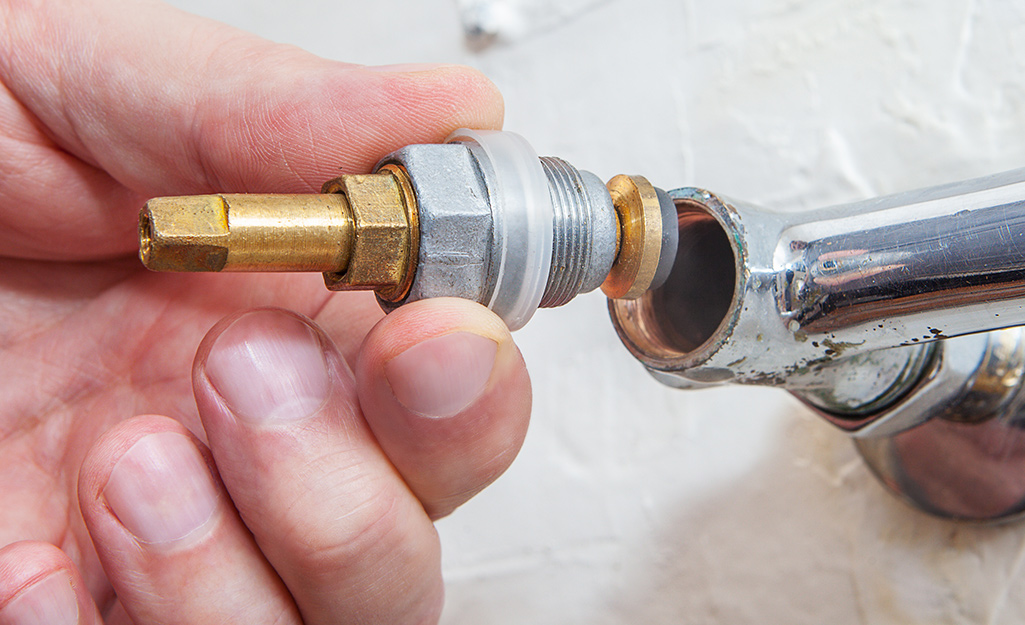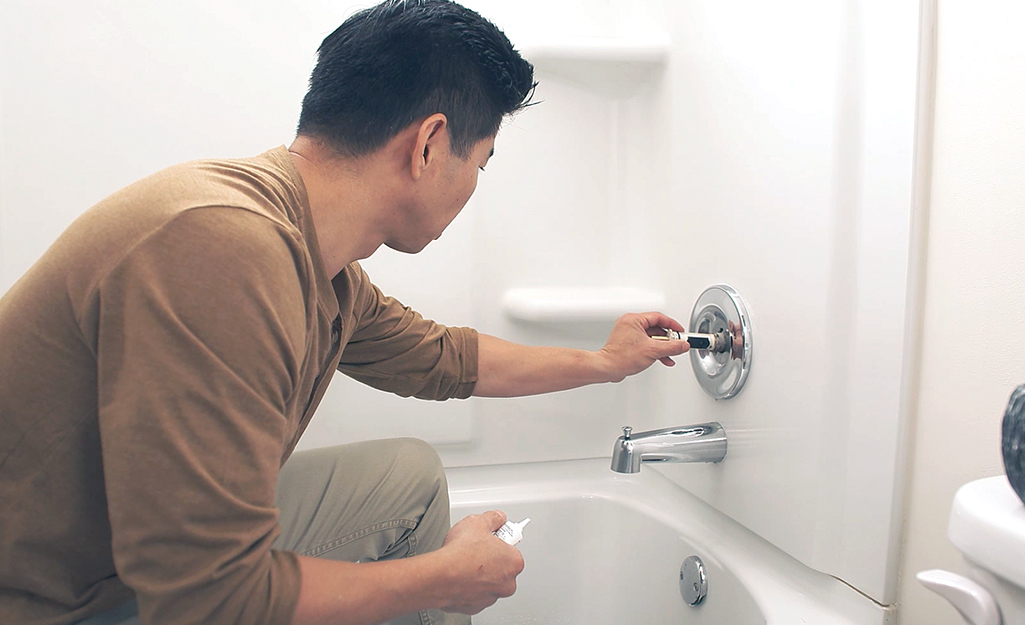Why It's Critical to Resolve a Broken Faucet
Why It's Critical to Resolve a Broken Faucet
Blog Article
Do you find yourself on the lookout for help and advice concerning What Causes Leaky Faucets & How To Fix Them?

Leaking faucets might appear like a small inconvenience, but their effect surpasses just the inconvenience of the audio. From wasting water to incurring unnecessary monetary prices and wellness threats, ignoring a dripping faucet can bring about numerous repercussions. In this post, we'll explore why it's essential to resolve this typical household issue without delay and efficiently.
Wastefulness of Water
Ecological Impact
Trickling taps contribute significantly to water wastefulness. According to the Epa (EPA), a single faucet dripping at one drip per secondly can waste greater than 3,000 gallons of water each year. This not only strains water resources however additionally influences environments and wild animals based on them.
Step-by-Step Overview to Repairing a Dripping Tap
Tools Called for
Prior to attempting to fix a dripping tap, gather the required devices, consisting of a flexible wrench, screwdrivers, substitute parts (such as washers or cartridges), and plumber's tape.
Typical Tap Issues and Their Solutions
Determine the kind of tap and the certain issue creating the drip. Common problems consist of worn-out washers, rusty shutoff seats, or defective O-rings. Refer to manufacturer directions or on-line tutorials for step-by-step advice on fixings.
Financial Costs
Increased Water Bills
Past the ecological impact, dripping taps can blow up water costs considerably. The accumulated waste gradually equates right into higher energy costs, which can have been stayed clear of with timely repair services.
Prospective Building Damages
Furthermore, extended leaking can lead to damage to components and surface areas surrounding the faucet. Water build-up can create discoloration, corrosion, and even structural problems if left neglected, causing added repair costs.
Health and wellness Problems
Mold And Mildew and Mold Development
The constant presence of dampness from a dripping faucet develops an optimal setting for mold and mold growth. These fungi not only endanger indoor air top quality yet additionally position wellness threats, especially for people with breathing problems or allergies.
Waterborne Illness
Stationary water in dripping faucets can become a breeding place for germs and other pathogens, raising the risk of waterborne illness. Contaminants such as Legionella bacteria prosper in stationary water, possibly leading to severe illnesses when ingested or inhaled.
DIY vs. Expert Repair work
Advantages and disadvantages of DIY Repair Work
While some may attempt to repair a leaking faucet themselves, do it yourself repair services feature their very own set of obstacles. Without correct expertise and tools, DIY attempts can aggravate the problem or cause insufficient repair work, prolonging the problem.
Advantages of Employing a Professional Plumber
Working with a professional plumber guarantees that the underlying source of the leaking tap is dealt with efficiently. Plumbing technicians possess the competence and devices to identify and fix tap problems effectively, conserving time and lessening the threat of additional damage.
Environmental Responsibility
Individual Contribution to Preservation
Taking duty for taking care of leaking faucets lines up with broader efforts towards water preservation and environmental sustainability. Every individual's activities collectively make a substantial influence on protecting precious sources.
Lasting Living Practices
By prioritizing punctual repair services and adopting water-saving behaviors, individuals contribute to lasting living practices that profit both present and future generations.
Safety nets
Regular Upkeep Tips
To stop leaking taps, perform regular maintenance such as cleansing aerators, examining for leakages, and changing worn-out components quickly. Additionally, think about mounting water-saving devices or upgrading to a lot more reliable components.
Significance of Prompt Repair Works
Attending to trickling faucets as quickly as they're noticed avoids additional water waste and possible damages, inevitably saving both water and money over time.
Effect On Home Worth
Assumption of Well-Maintained Home
Maintaining a residential property in good condition, consisting of attending to maintenance issues like dripping taps, boosts its perceived value and desirability amongst possible buyers or lessees.
Influence on Resale Value
Qualities with well-kept plumbing components, consisting of faucets, command higher resale values in the real estate market. Addressing dripping faucets can add to a positive impression throughout residential or commercial property evaluations and negotiations.
Verdict
Addressing a dripping tap exceeds simple benefit; it's an essential action toward conserving water, reducing economic costs, and guarding health and residential property. Whether via DIY repair services or professional assistance, taking action to deal with trickling taps is a tiny yet impactful means to promote responsible stewardship of sources and add to a healthier, extra lasting future.
Why Are My Faucets Dripping (And Can I Fix it Myself)?
Causes of a Dripping or Leaking Faucet
Whether you’re hearing drops of water falling and hitting a sink, or noticing water ooze out from the base of the spout, you shouldn’t ignore a dripping or leaking faucet. And, the good news is, sometimes you can fix the problem yourself.
In this article, we’ll review a few common causes of dripping and leaky. We’ll also walk you through some basic ways to find the problem and handle it without calling anyone — and let you know when to call in a pro.
But, no matter what the cause, or whether you can handle it on your own, the sooner you address it, the better.
Each drip may be a tiny amount of water. But, they all add up quickly. According to the U.S. Geological Survey, one faucet losing one drop every 20 seconds — five a minute — wastes around a liter of water every day, and 173 gallons a year.
Add in more than one in your house, and it’s a lot of water to waste. So, we’ll help you get to the bottom of things quickly.
Four Reasons Your Faucet May Be Dripping
Aerator is Damaged or Unseated Valve Seat is Corroded O Ring is Loose or Worn Out Part of the Assembly is Loose Aerator is Damaged or Unseated
If you unscrew the end of your faucet, you’ll find the aerator. It’s the little stem piece with a screen on it that shuts off the water circulation.
If it’s damaged, or if it’s not sitting right, it will allow water to pass through.
Valve Seat is Corroded
Next is the valve seat, which is connected to the washer. If the washer wasn’t in place correctly, then it could have ground against the seat. Over time, this damages the valve seat.
The problem could also be corrosion: Over time, the part has worn out, and it’s now allowing water to pass through.
O Ring is Loose or Worn Out
Since the o ring is only a small rubber gasket, it’s a common reason why the faucet is dripping. You’ll find it at the base of the faucet, and it’s there to keep water from coming out where it’s not supposed to.
However, it’s common for the o ring to wear out over time. When it does, you’ll notice a drip.
Part of the Assembly is Loose
So far, we’ve looked at a few small, specific parts. But, the problem could be anywhere in the assembly if something’s out of place.
Even if a part isn’t damaged, over time, it may have become loose or dislodged. It could be the parts we mentioned, or the aerator at the tip of the faucet, the stem itself,
Can I Fix a Leaky Faucet Myself?
Depending on the problem, and how handy you are, there’s a chance you can fix a leaky faucet without calling a professional. But, you do run the risk of making the problem worse.
If it’s a small drip, you can certainly try a few troubleshooting tactics. We’ll walk you through them in a moment.
But, no matter what, your first step should be shutting off the water coming into the faucet. You should find a shutoff valve under the sink on the pipes leading to it. Turn each one clockwise until they close tightly.
Next, make sure you have the right tools for whatever you’re attempting. It’s tempting to make do with what you have. But, you need the right ones for a reason: You’re often dealing with small parts that can break if you handle them carelessly.
If you’re feeling confident, here are some places to start.
Items Near the Tip of the Faucet
A few of the parts we mentioned — particularly the valve seat and washer — are located at the tip of the faucet where the water comes out. They’re easy to access, making it a good place to start.
Check the O Ring
To check the o ring, you’ll need to take off the spout at the base. It’s easiest on kitchen sinks with long spouts, versus the smaller, bulkier base on most bathroom sinks.
Either way, this can be tricky, so do it carefully and don’t force anything. If it’s not coming right off, you’re much better off calling in a pro than possibly breaking something.
For a kitchen sink, there’s usually a nut or coupling assembly at the base of the spout. These often slide off easily without using any tools.
Once you’ve disassembled those parts, gently but forcefully twist off the spout.
Then, you can see the o rings. There should be two of the rubber gaskets on the base. If they look worn or damaged, replace them, and see if that solves the problem.

Do you like reading about How to Fix a Dripping or Leaky Faucet ? Try leaving feedback further down. We would be happy to listen to your suggestions about this blog post. We are looking forward to see you back again soon. Sharing is caring. Helping others is fun. Thanks a lot for going through it.
Report this page